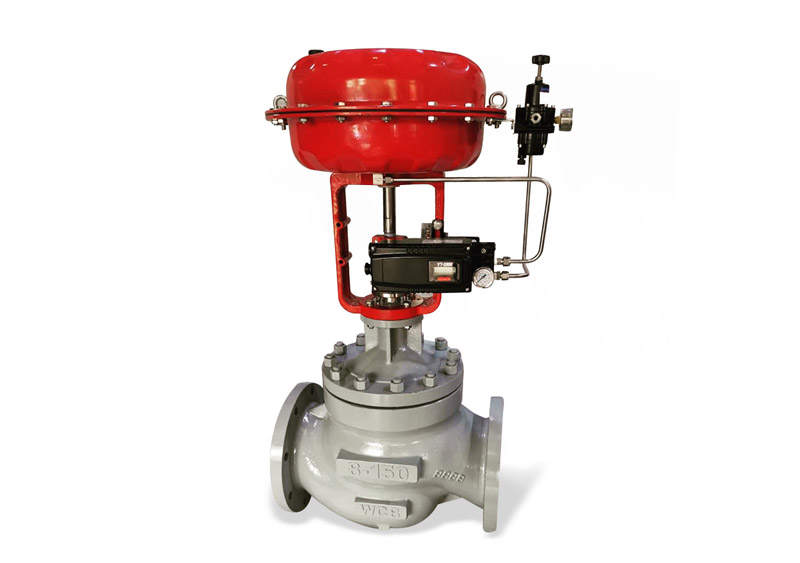Enhancing Functional Effectiveness with Advanced Control Valves

Maximize Energy Savings and Convenience With Advanced Structure Automation Controls
In the realm of modern-day design and facility management, the assimilation of innovative building automation manages stands as a critical improvement. By utilizing the power of automation, structures can adapt, respond, and advance in methods that were as soon as inconceivable.
Power Efficiency Benefits
Power performance advantages can significantly minimize power usage and operational prices in structures. By executing energy-efficient methods and technologies, structure owners and drivers can accomplish significant cost savings while likewise adding to environmental sustainability. Among the main benefits of improving power performance in structures is the decrease of energy bills. Energy-efficient systems, such as advanced building automation controls, can maximize using sources like cooling, heating, and lights, leading to reduced power expenditures over time.
In addition, improved energy performance can extend the lifespan of structure tools and systems. By running a lot more effectively, HVAC systems, lighting fixture, and various other building parts experience much less damage, leading to reduced upkeep and replacement costs. Additionally, energy-efficient structures usually command greater home values and rental rates, offering long-term monetary advantages to owners.
In addition, energy performance can improve occupant comfort and performance. Correctly managed indoor settings with optimal lights and thermal problems produce an even more pleasant and favorable workspace, resulting in improved worker satisfaction and performance. Overall, the energy performance benefits associated with sophisticated building automation controls are diverse, including price financial savings, ecological stewardship, and occupant well-being.
Improved Convenience Control
Enhancing convenience control in structure environments requires a sophisticated combination of sophisticated automation systems for optimum occupant well-being. By using advanced structure automation controls, centers can tailor the indoor setting to fulfill the specific requirements and preferences of occupants. These systems enable exact law of ventilation, illumination, and temperature, creating a comfortable and productive ambience. Owner satisfaction and productivity are very closely connected to thermal convenience, making it necessary to have systems in position that can adjust to altering conditions in real-time.
By including these advanced controls, structures can not only improve convenience however additionally boost energy performance by enhancing system operations based on real occupancy and use patterns. Inevitably, prioritizing resident convenience via advanced automation systems leads to a much more delightful and healthier indoor atmosphere.
Functional Efficiency Improvements

In addition, the application of real-time surveillance and analytics devices allows structure operators to determine energy ineffectiveness and operational anomalies quickly. By continuously keeping track of power use patterns and system efficiency metrics, news adjustments can be made in real-time to enhance energy consumption and make sure peak functional efficiency. control valves. In addition, integrating demand feedback strategies right into structure automation controls can better improve functional performance by dynamically changing power usage based on grid conditions and rates signals
Indoor Environment Optimization
Efficient indoor climate optimization is a fundamental element of structure automation controls, ensuring occupants' comfort and wellness while making the most of power financial savings. By making use of innovative sensors and controls, constructing automation systems can continually monitor and change temperature, moisture levels, air quality, and ventilation to develop an optimal interior atmosphere. Keeping constant and comfy problems not only enhances passenger complete satisfaction however likewise enhances productivity and total wellness.
Interior environment optimization also plays a vital duty in energy efficiency. By fine-tuning cooling, home heating, and ventilation systems based upon real-time data and occupancy patterns, developing automation controls can dramatically minimize power usage - control valves. Executing methods such as demand-controlled ventilation and thermal zoning can assist minimize power waste while ensuring that each location of the structure gets the essential conditioning.

Lasting Environment Creation
Structure automation controls Check Out Your URL not only maximize interior environment conditions for energy effectiveness and passenger comfort however likewise lay the foundation for creating a lasting setting with calculated monitoring of sources and systems. By incorporating innovative building automation technologies, such as sensing units, actuators, and smart software, centers can adjust and monitor power usage in real-time to minimize waste and reduce their carbon impact. These systems make it possible for anticipating upkeep, identifying potential concerns prior to they intensify and maximizing devices efficiency to improve longevity and performance.
In addition, lasting environment production prolongs beyond power administration to encompass water preservation, waste reduction, and next page indoor air high quality renovation. Building automation controls can manage water usage, detect leaks, and ensure appropriate garbage disposal methods, adding to overall sustainability initiatives. In addition, by regulating and keeping track of air flow and filtration systems, these modern technologies boost resident wellness and productivity while reducing power consumption related to a/c operations.
Verdict
To conclude, advanced structure automation controls deal significant advantages in terms of power savings, comfort control, operational effectiveness, interior climate optimization, and developing a sustainable setting. By carrying out these controls, buildings can accomplish optimal efficiency while reducing power usage and improving resident convenience. It appears that using innovative automation modern technology is essential in improving structure performance and producing a much more lasting future.
Power efficiency advantages can considerably lower power intake and functional expenses in buildings. In general, the energy efficiency benefits linked with innovative structure automation controls are diverse, including expense savings, ecological stewardship, and passenger wellness.
Furthermore, incorporating need action techniques into building automation controls can even more boost functional efficiency by dynamically readjusting energy use based on grid problems and pricing signals.
Structure automation controls not just enhance indoor climate problems for energy efficiency and passenger comfort yet likewise lay the structure for producing a lasting atmosphere via calculated management of sources and systems.In final thought, progressed building automation regulates offer substantial benefits in terms of power savings, convenience control, operational performance, indoor environment optimization, and creating a lasting atmosphere.